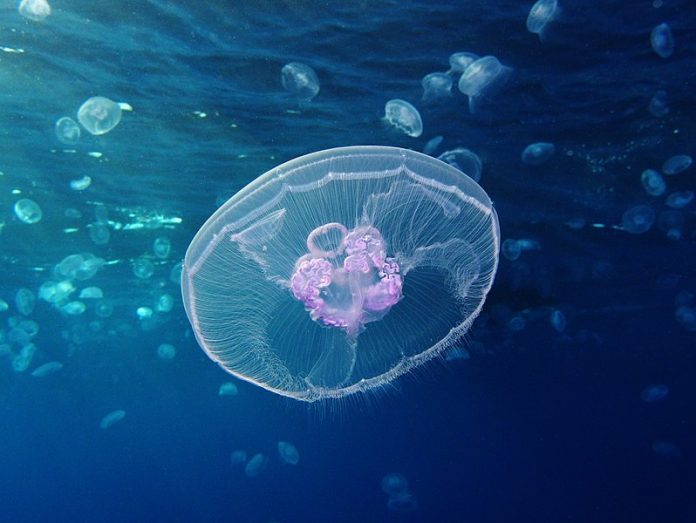World leading expert says more research needs to be done in Tasmania, Australia.
It sounded like the beginning of a horror film. Thousands of stinging beasts invading Tasmania’s shores. Though it was all too real for salmon farmer Huon Aquaculture. The explosion of a moon jellyfish population hit them hard in February.

In an interview with ABC, Dr Lisa-Ann Gershwin explained that aquaculture, including salmon farming, could be making the issue worse.
The expert – who has written several books on the subject – thinks that despite there being an issue with rising jellyfish populations called “blooms” over the past 40 years, aquaculture could also be acerbating the problem.
“Jellyfish are a problem, and they are a problem that’s getting worse globally,” she told the publication. “I believe there’s every probability that aquaculture is making the jellyfish problem worse.”
“We do have good data from places overseas that shows aquaculture stimulates the growth of the very organisms that cause problems for the aquaculture industry,” she added.”It’s a vicious cycle, where the aquaculture is making the problem worse, that is then impacting them. In my mind, the bigger problem is that it’s not a one-off.”
Dr Gershwin explained that organisms grew naturally on any structure that was in the water, whether it be rocks, boats or jetties. “When a polyp dies, it’s replaced by more,” she said. This can put salmons farmers in a Catch 22 situation where if they scrape the creatures away from net pens, the fragments just create more colonies.
“More research needs to be done,” she said, adding there was evidence of it occurring overseas. “A reasonable hypothesis is that it could be happening here,” she said.
Andrew Gregson from the Tasmanian Salmon Growers Association told ABC the problem was not unique to Tasmania and occurred before salmon farming existed.
Dismissing Dr Gershwin’s analysis, he said there was no evidence to suggest aquaculture had caused the problem. “Like all farmers, we are subject to pests on the odd occasion,” he said. “The occasional swarm of moon jellyfish is not unusual in that context. We don’t know the exact cause for it, we do know from some research that temperature or rainfall can contribute to it and we think that what’s happened last year.”


